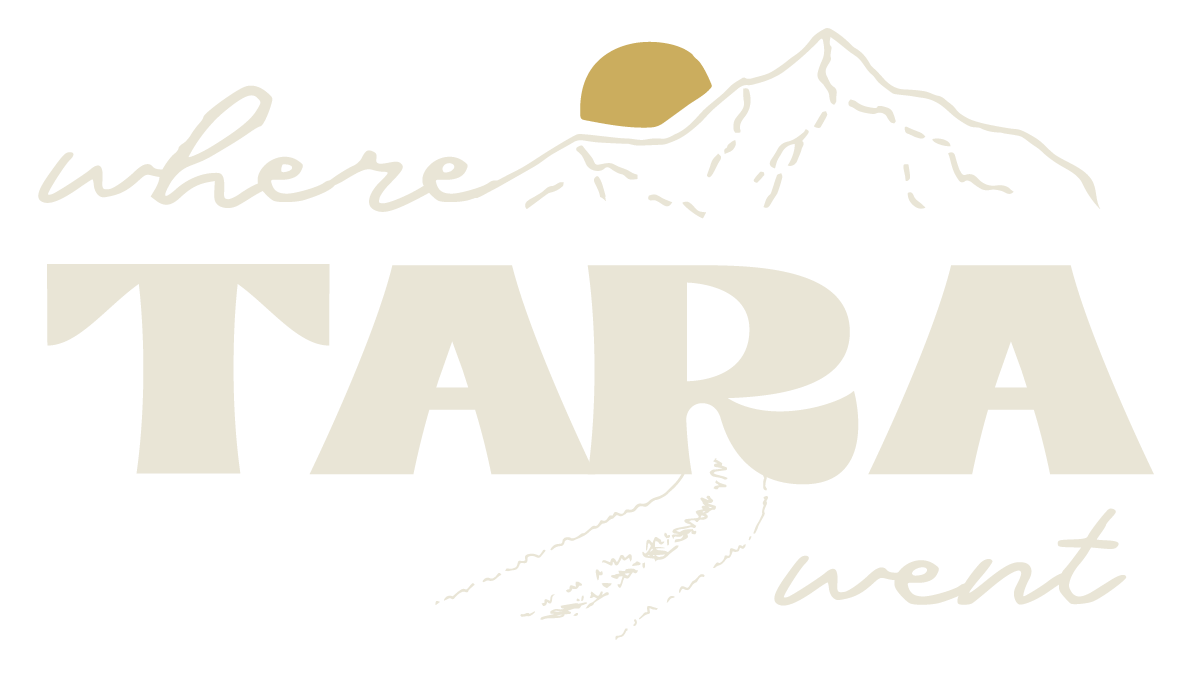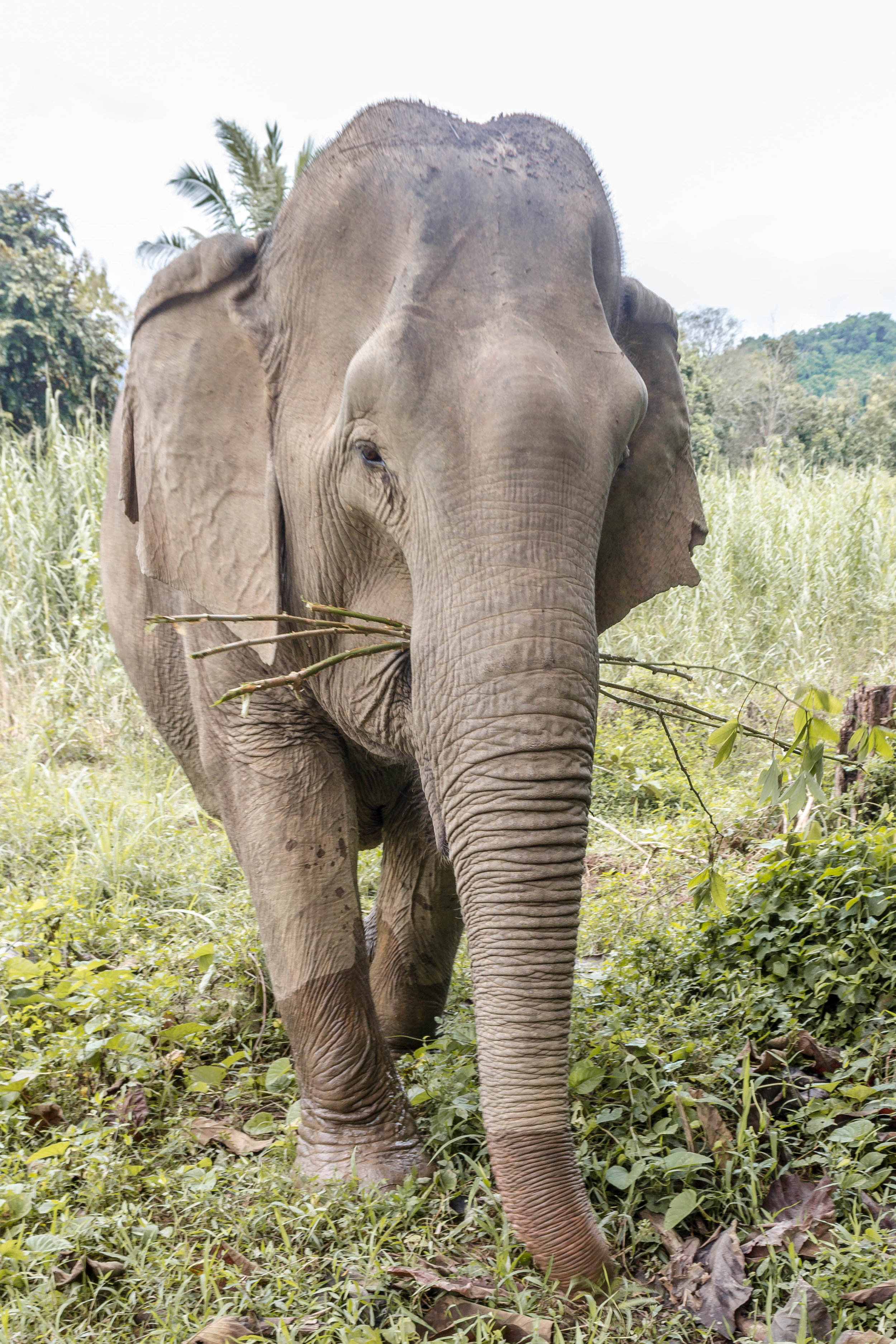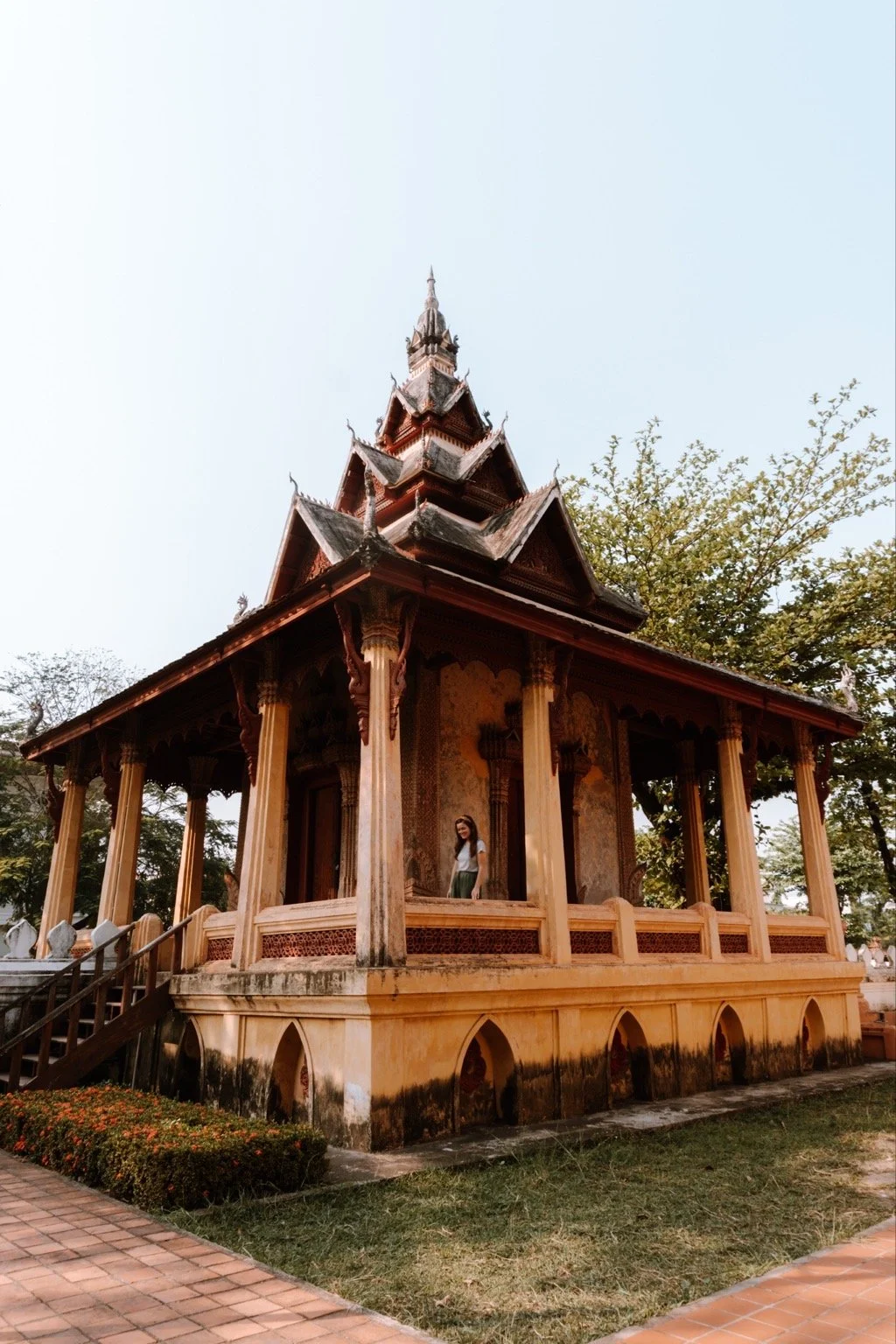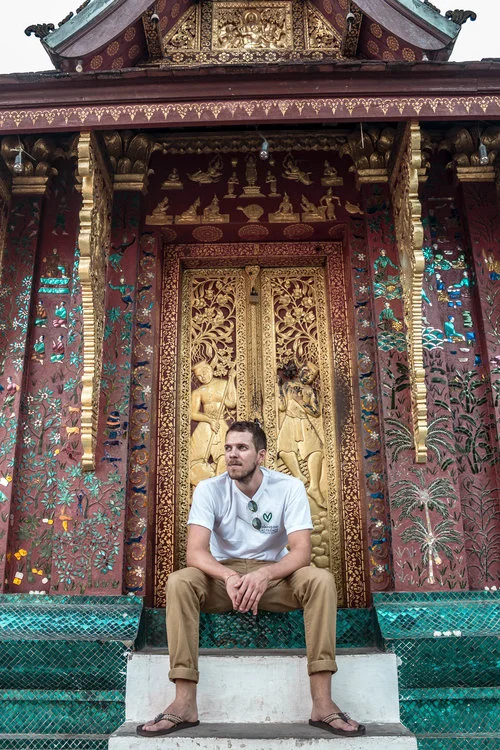what to know about Mandalao's ethical elephant encounter in Laos
I pull another leech off my leg as Lan, my guide, sprays it with a lemongrass and water mixture he stores in a fanny pack. “You just donated blood to nature,” he says, laughing. I laugh too. Truth be told, I’m unbothered by the little leech. How could I be bothered by something so insignificant when I’m walking on thick, green trails on a day when the heat isn’t insufferable…next to elephants.
And all thanks to the conservation efforts of Mandalao.
This post is a complete breakdown of my Mandalao experience. Be prepared to read—this post is a long one. I didn’t want it to be brief in any form because animals and tourism are a very controversial topic; one that I wanted to approach with the utmost clarity.
After years of blogging and traveling, I’ve cultivated my own philosophy regarding travel and my responsibility to local communities as a tourist. I would never write a positive post about a negative experience and I wouldn’t endorse a company I believed was doing harm, especially to other living creatures. That’s why, when asked to be a guest at Mandalao, I was excited, but skeptical.
So many elephant “sanctuaries” still allow tourists to ride elephants or pay to be a mahout – a job that should be only conducted by caring professionals who work closely and develop rapport with elephants. I’ve shared how my first experience in Asia, a trip to Thailand years and years ago, was met with much naivety. I neither understood nor researched the importance of sustainable, conscious travel. It simply wasn’t on my radar and, to be fair, it wasn’t really on anybody else’s. Years later, so much has changed for the better.
I am so happy to report that I walked away from my humbling and magical experience with Mandalao nearly speechless. Their care and compassion for the elephants was apparent from the moment we arrived at the lodge. Mandalao is different. Their hearts are invested in the conservation of these gentle giant creatures.
THE IMPORTANCE OF ELEPHANTS IN LAOS
Elephants are ingrained in Lao culture and folklore. The former flag of Laos featured a three-headed, white elephant and Laos used to be known as “the land of one million elephants”. However, the current reality is that there are less than 1,000 of the creatures left across the entire country. Mandalao hopes that by educating tourists and providing an intimate, ethical experience for travelers to witness the beauty of the elephants, they will eventually be revered and treasured the way they were in the past.
mandalao’s mission
Mandalao is a recently opened conservation organization located 20 kilometers outside of Luang Prabang. There, elephants working at unregulated logging camps are rescued and brought to walk with humans rather than be ridden by them. Mandalao offers a dignified life for the elephants, so that they may spend the rest of their days eating and roaming as they please.
There are no howdahs {elephant saddles}, hammers, hooks, circus tricks, baths, or rides. All of that is absolutely out of the question. You are given instruction regarding how to appropriately interact with the elephants if they approach you, which they certainly will during your trek. If they come to you, you are encouraged to engage with them. Elephants are social, compassionate creatures that feed off your emotions and they like to be interacted with on their terms.
You can read about the different tour options Mandalao offers here. I experienced their morning half-day trek.
TOUR EXPERIENCE DETAILS + ITINERARY
PICK UP + ARRIVAL //
I was picked up around 8:30 AM at my guesthouse by Lan, our guide for the day. After a quick 30-minute drive outside of Luang Prabang, we arrived in a jungle paradise. We walked down a tree-lined walkway to a massive wooden bungalow where other guests were waiting. Every tour only accommodates 8 people, to keep the tours small and intimate, and so none of the elephants are overwhelmed. Luke and I were in a group with two other people, making it nice and small.
We were all offered complimentary tea and coffee. After introductions, Tanh, another guide, came to sit at the long wooden table where we were conversing to give us an educational rundown. Tanh gave us all the information regarding how elephants are treated at riding and bathing camps, the people versus elephant conflicts that exist, and why the elephants need to be protected. We also learned a bit about the backgrounds of the elephants {more on that below}.
After our educational talk, we all put on boots to keep off the mud from the recent rains and to protect against the tiny leeches of the jungle. You’re provided a reusable water bottle in a canvas carrying case and a waterproof bag, in case of rainy weather. We were lucky and experienced mild temperatures and sunshine on our visit. Once everyone was geared up, we hopped into a wooden long boat and were taken across the river to the land designated for the elephants.
MEETING THE ELEPHANTS + THE TREK //
Landing across the river, the elephants were playing happily and were eating. Elephants eat 200 kilograms of food a day, so healthy and happy ones are constantly chomping away. Mahouts were sitting in the shade of a bamboo hut, smiling at us as we admired the elephants from a few meters away. Tanh and Lan explained that the baskets of bananas were there for us to feed the elephants if they approached us {which they would}. The elephants aren’t forced to eat them and you never pay to feed the elephants as some sort of side-show-entertainment. The guides explained that the bananas act as an olive branch, letting the elephants know you aren’t a bad guy there to take them logging. If they aren’t hungry or interested, tough luck. If they are, they’ll eagerly walk up to you and wrap their trunks around the organic bananas, bring the fruit to their mouth, and gobble it up.
Once you’ve met the elephants, you are led by your guide through the jungle, walking alongside elephants. There is no real time frame for the trek since the elephants are allowed to stop and graze whenever they feel like it {and they feel like it a lot}. The elephants walk at the pace they please and often make their own way through the green, lush landscape. Occasionally, the elephants will reach up into the canopy to pull down a vine, not realizing their own strength, and the mahout will yell “RUN!” as leaves and branches fall.
The tour you book will determine the different areas you trek through. When we looped around toward the open field we started near, we said our good-byes to the elephant, got back into our long boat, and were shuttled across the river to the lodge.
LUNCH + DEPARTURE //
After taking off our boots and washing our hands, we all sat down at the dining table overlooking the river for an organic Lao meal. I was asked prior to my arrival about my dietary requirements and the amount of food they made was plenty for the four people on our tour. There was only one dish that came with meat, giving me plenty of options! The food comes from an organic farm in the local area that you can actually see from the Mandalao property.
We all finished our meals, said our good-byes to the staff, and got back into the van to be dropped off at our respective guesthouses. We arrived at our guesthouse arrived 3:30 PM, shaking off the mud and trying to unwind from the adventure we’d just had. It was the most amazing day; one I’ll remember for the rest of my life.
THE ELEPHANTS OF MANDALAO
Currently, Mandalao is home to 8 elephants: 7 adults and a three-year-old baby, Kit. 6 of the elephants have been rescued from the logging industry. One recently had its freedom bought from a riding camp, allowing it to “retire” at Mandalao. All the elephants are female except for young Kit, the lone boy of the group. They all have their own personalities and likes, which your guide can tell you more about.
WHERE YOUR MONEY GOES
Caring for elephants is an expensive, but worthwhile, endeavor. Yes, it’s a fairly costly experience to have. That’s why it’s important to know exactly where your dollars are going.
Money generated from tours goes towards feeding these happy, hungry creatures. I’ve already mentioned how much they like to eat, and so it goes without saying that feeding them costs a bit. It also goes towards paying the kind mahouts who care for the elephants and build meaningful relationships with them.
Looking forward, Mandalao would like to rescue more elephants from the logging industry. Purchasing elephants from these companies is extremely costly. As Mandalao increases its number of rescued elephants, it would also like to buy more land so that the elephants are never overcrowded and have more than enough land to trek through.
WHY ELEPHANTS NEED OUR HELP
Riding is still permitted in many “sanctuaries”, thanks to the word “sanctuary” being green-washed. At these establishments, elephants are ridden typically between 30-minutes to 1-hour at a time for 8 hours a day. Tourists sit in howdahs that are strapped around the elephants’ necks, chest, belly, and tail. If a mahout isn’t given a tip after leading a ride, elephants are sometimes poked with hooks or hit with wooden hammers.
What you might not know is that humans are the #1 predator of elephants. Not tigers or lions. Humans. Why? Let me break it down.
DEFORESTATION | We are cutting down the natural environments of these gorgeous creatures. This is why it’s important to consider your lifestyle and any efforts you can make to life more consciously.
THE IVORY TRADE | Pretty ivory souvenirs and jewelry are top selling commodities across Asia. The ivory trade is more common in Africa, where tusks are found on both female and male elephants, but it is still a part of equation.
ELEPHANT TOURISM | Elephants are taken from the wild for the live elephant trade – primarily going to Thailand for the tourism industry. For every domestic elephant living at an elephant camp, working at a logging site, or entertaining at a circus, an estimated three elephants have died. Captors find babies in the wild that they know will be easier to raise and train for shows or riding. The female elephants in the herd will often fight back to protect the baby, causing momma and auntie elephants to be killed in the capture process.
AGRICULTURAL CONFLICTS | Due to encroaching human settlements, there are increased incidents where elephants raid planted crops, ruining farmer crops and thusly their livelihood. Retaliation killings by farmers is on the rise. This is one of the biggest causes of elephant deaths in Asia. Fortunately, in some countries, the government provides compensation for crop damage or deaths caused by elephants. As human populations increase, human-elephant conflicts are likely to increase.
If you have any questions at all regarding Mandalao, I encourage you to contact them. They are as transparent as they are friendly! Don’t want to take my word for it? Mandalao has been covered by CNN, Vanity Fair, and World Animal Protection. Let’s support businesses, brands, and projects that work towards saving the magic that exists in this world.
Disclaimer: I was a guest of Mandalao Elephant Conservation, but all my opinions are my own and my experience is expressed authentically.

















































